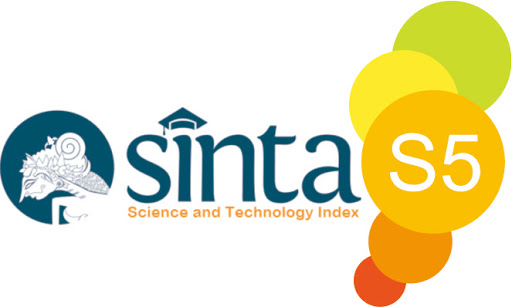DILEMA ALIANSI AMERIKA SERIKAT TERKAIT PENINGKATAN KAPABILITAS MILITER JEPANG
DOI:
https://doi.org/10.23969/paradigmapolistaat.v1i2.1168Keywords:
Alliance dilemma, United States, JapanAbstract
This paper examine the enhancement of military alliance between Japan and Unites States under Japan constitution. After the World War 2, Japan’s loss left Japan without enough defense to protect its country. Under the San Francisco Agreement, the United States and Japan make a Security Cooperation. With all the dynamics on the International Relation, United States and Japan have enhance their security alliance. This research will use alliance dilemma theory by Glenn H. Snyder. According to Snyder when the alliance is formed, the state has two choices in its alliance, cooperate or defect. The risk is when a state decided to make an alliance, the state will entrapped on the alliance. While if a state decided to defect, the state will get abandonment. So, this paper will examine the decision of the United States. In this case, enhancement of the security cooperation between United States and Japan is caused by alliance dilemma that make United States does not want to be entrapped into a regional conflict over an ally which is Japan.
Downloads
References
A. Buku
Neuman. Lawrence. (1997). “Social Research Methods: Qualitative and Quantitative Approaches”. Boston. Allyn and Bacon. hlm. 19-20
Manthai, B. J. (2000). Alliance Theory, East Asia and The Japan-US Security Relationship. Western Ontario: University of Western Ontario.
Mearsheimer, J. (2001). Anarchy and The Struggle for Power. Contending Perspective , 54-72.
B. Jurnal
Ando, S. (2013). Empirical Analysis of the Defense Interdependence Between Japan and the United States. Defense and Peace Economy , 223-231.
Chull, K. S. (2017). Endangering Alliance or Risking Proliferation?: US-Japan and US-Korea Nuclear Energy Cooperation Agreement. The Pacific Review , 692-702.
Hughes, C. W. (2007). Forging a Strengthened US Japan Alliance . Adelphi Papers , 97-115.
Ito, G. (2004). Leadership in Banwagon: A Historical Sketch of Japan's Security Policy. Policy and Society , 21-37.
Kelly, D. (2014). US Hegemony and the Origins of Japanese Nuclear Power:The Politics of Consent. Neww Political Economy , 819-846.
Kim, T. (2011). Why Alliances Entangle But Seldom Entrap States. . Security Studies , 350-377.
Mathur, A. (2007). Japan’s Changing Role in the US-Japan security alliance. Strategic Analysis , 503-525.
Menenberg, A. (2014). Collective Defense: Abe's New Security Plan. SAGE Publication , 68-72.
Mulgan, A. G. (2010). Beyond Self-Defense? Evaluating Japan's Regional Security Role Under the New Defense Guidelines. Pacifica Review , 223-246.
Singh, B. (2017). Japan-ASEAN Relations: Challenges, Impact and Strategic Options. ASEAN at 50: A Look at Its External Relations, 95-106.
Wetson, S. A. (20014). The US-Japan Alliance in the New Post Cold War. Japanese Studies , 45-59.
Wirth, C. (2015). Securing Japan in the ‘West’: The US Japan Alliance and Identity Politics in the Asian Century. Geoppolitics , 287-307.
Wook, K. H. (2015). Substantiating the cohesion of the post-cold war US-Japan alliance. Australian Journal of International Affairs , 287-307.
C. Portal
Treaty of Peace With Japan, diakses dari https://www.documentcloud.org/documents/1338718-san-francisco-peace-treaty-1951.html, tanggal 10 Mei 2018.
Muhaimin, “Kapal Induk dan 14.000 Tentara AS Latihan Perang dengan Jepang”, dalam
https://international.sindonews.com/read/1258140/40/kapal-induk-dan-14000-tentara-as-latihan-perang-dengan-jepang-1510860427, diakses tanggal 10 Mei 2018.
Hanna Azarya Samosir, “AS dan Jepang Latihan Gabungan di Dekat Semenanjung Korea”, dalam https://www.cnnindonesia.com/internasional/20170809105314-113-233446/as-dan-jepang-latihan-gabungan-di-dekat-semenanjung-korea, diakses tanggal 10 Mei 2018
Daniel Brown. 2018. “The 15 Countries with the highest military budgets in 2017”. Diakses dari https://www.businessinsider.sg/highest-military-budgets-countries-2018-5/?r=US&IR=T. Tanggal 27 Mei 2018.
“2018 United States Military Strength”. Diakses dari https://www.globalfirepower.com/country-military-strength-detail.asp?country_id=united-states-of-america. Pada tanggal 27 Mei 2018.
Lee Hudson Teslik. “Japan and Its Military”. Diakses dari https://www.cfr.org/backgrounder/japan-and-its-military. Pada tanggal 1 September 2018
Petrik Matanasi. “Militer Amerika Mencengkram Dunia”. Diakses dari https://tirto.id/militer-amerika-mencengkeram-dunia-bsTe. pada tanggal 27 Mei 2018.
“2018 Japan Military Strength”. Diakses dari https://www.globalfirepower.com/country-military-strength-detail.asp?country_id=japan. Pada tanggal 27 Mei 2018.
“2018 North Korea Military Strength”. Diakses dari https://www.globalfirepower.com/country-military-strength-detail.asp?country_id=north-korea. Pada tanggal 27 Mei 2018.
Fellyanda Suci Agiesta. “Inilah senjata nuklir Korea Utara yang bikin AS gemetar”. Diakses dari https://www.merdeka.com/dunia/inilah-senjata-nuklir-korea-utara-yang-bikin-as-gemetar.html. Pada Tanggal 27 Mei 2018.
Daniel Brown. “The 15 countries with the highest military budgets in 2017”. Diakses dari https://www.businessinsider.sg/highest-military-budgets-countries-2018-5/?r=US&IR=T. Pada tanggal 27 Mei 2018.
“2018 China Military Strength”. Diakses dari https://www.globalfirepower.com/country-military-strength-detail.asp?country_id=china. Pada tanggal 27 Mei 2018.
CNN Indonesia. “AS-Korsel Latihan Jet Tempur, Korut Ancaman Perang Nuklir”. Diakses dari https://www.cnnindonesia.com/internasional/20171203153336-113-259826/as-korsel-latihan-jet-tempur-korut-ancam-perang-nuklir. Pada tanggal 27 Mei 2018.
Downloads
Published
Issue
Section
License
In order to be accepted and published by Paradigma POLISTAAT: Jurnal Ilmu Sosial dan Ilmu politik, author(s) submitting the article manuscript should complete all the review stages. By submitting the manuscript the author(s) agreed to these following terms:
1. The copyright of received articles shall be assigned to Paradigma POLISTAAT: Jurnal Ilmu Sosial dan Ilmu politikas the publisher of the journal. The intended copyright includes the right to publish articles in various forms (including reprints). Paradigma POLISTAAT: Jurnal Ilmu Sosial dan Ilmu politikmaintain the publishing rights to the published articles.
2. Authors are permitted to disseminate published article by sharing the link/DOI of the article at Paradigma POLISTAAT: Jurnal Ilmu Sosial dan Ilmu politik. authors are allowed to use their articles for any legal purposes deemed necessary without written permission fromParadigma POLISTAAT: Jurnal Ilmu Sosial dan Ilmu politik with an acknowledgement of initial publication to this journal.
3. Users/public use of this website will be licensed to CC BY-SA (Attribution & ShareAlike).















